Abstract
The uptake and utilization of glutamic acid in the biosynthesis of ochratoxin A by Aspergillus ochraceus were studied. Uniformly labeled L-[14C]glutamic acid was incorporated into both the phenylalanine and isocoumarin moieties of ochratoxin A. Penicillic acid was also labeled. During the early stages of development, the amino acid was used mainly for the synthesis of ribonucleic acid and protein. A portion of glutamic acid was oxidized and was recovered as metabolic 14CO2. The initial uptake velocity of glutamic acid decreased with age and was pH and temperature dependent. No relationship was found between the initial uptake velocities and ochratoxin A biosynthesis.
Full text
PDF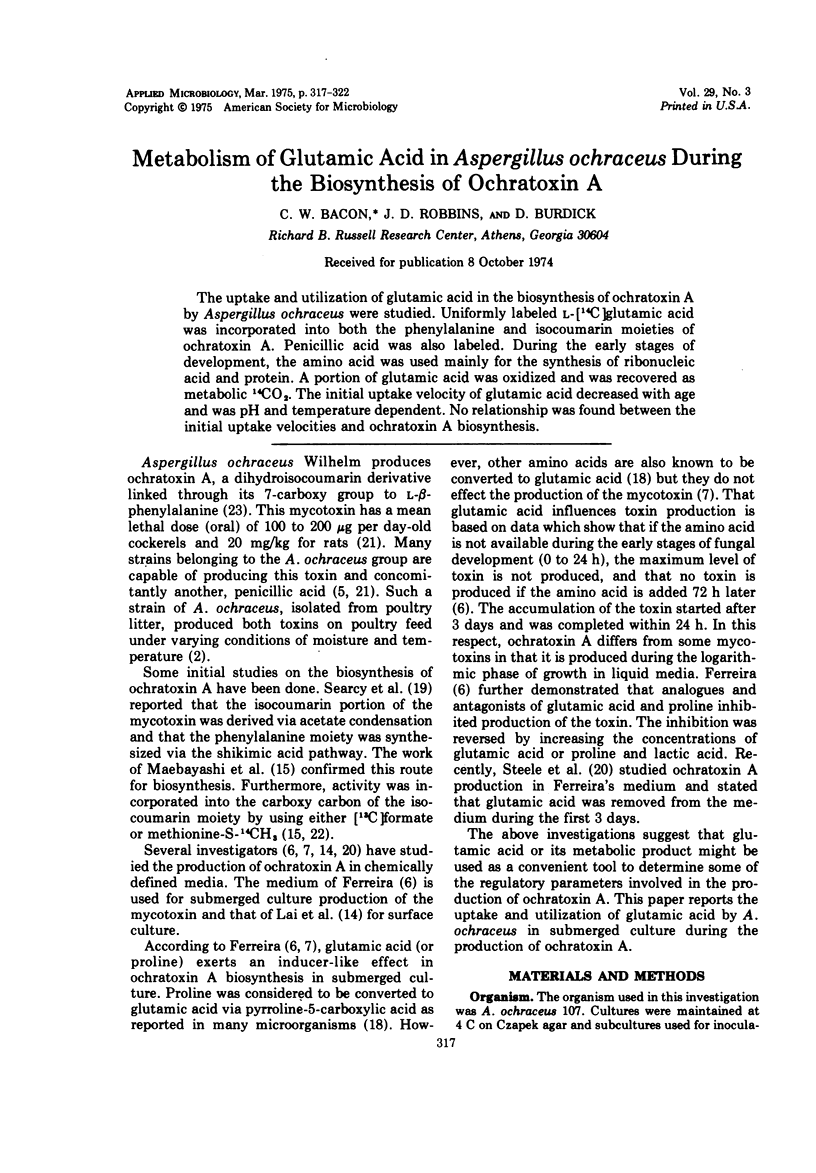
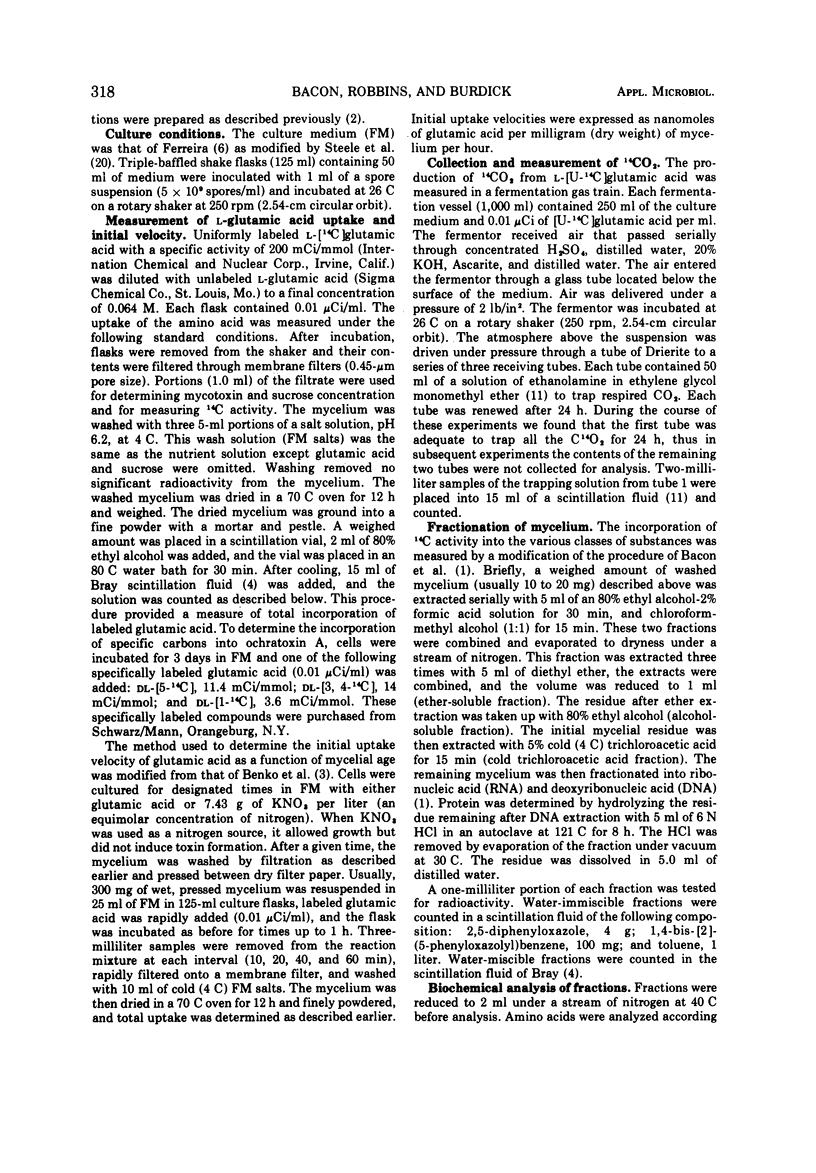
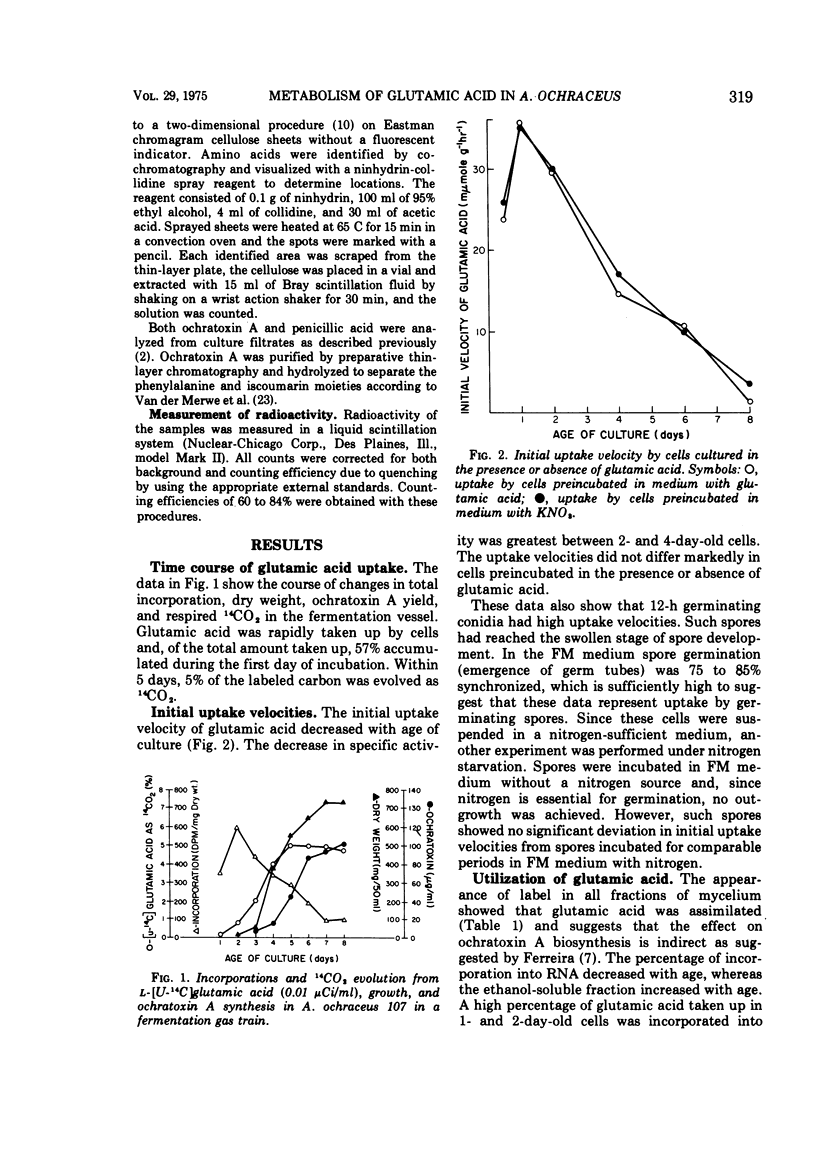
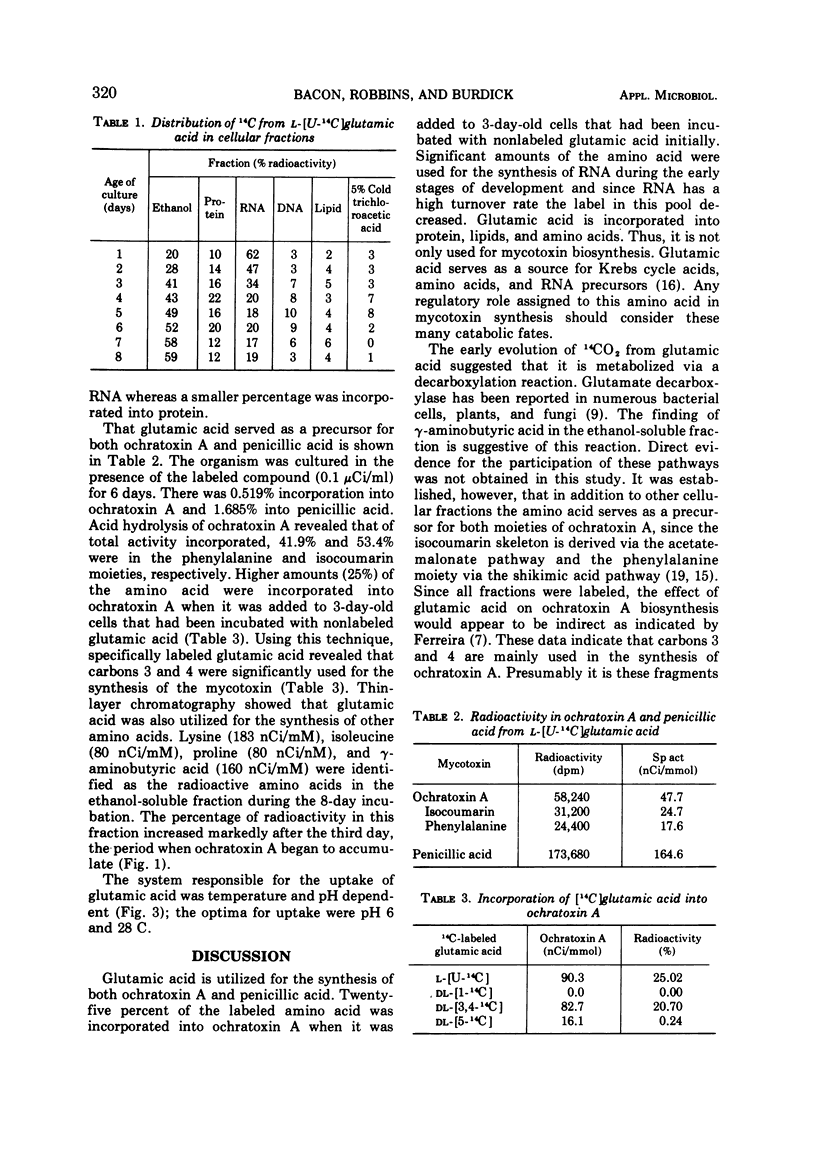
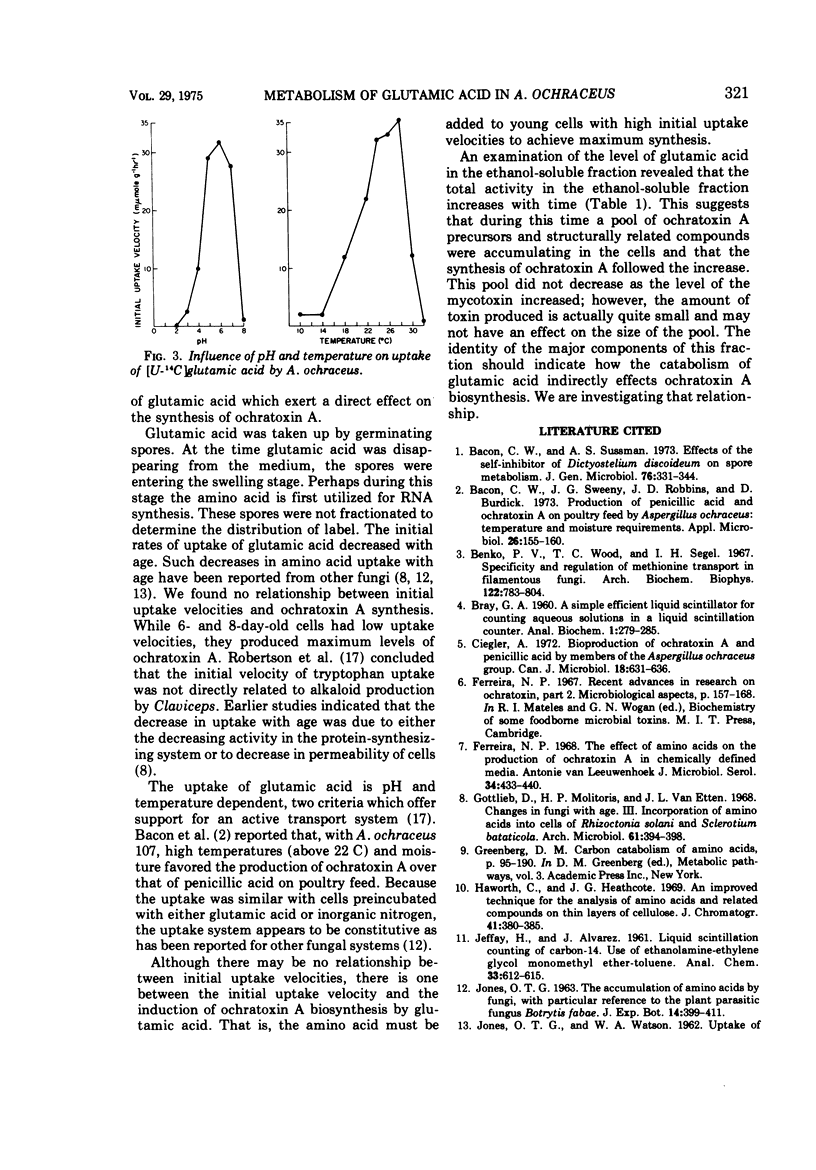
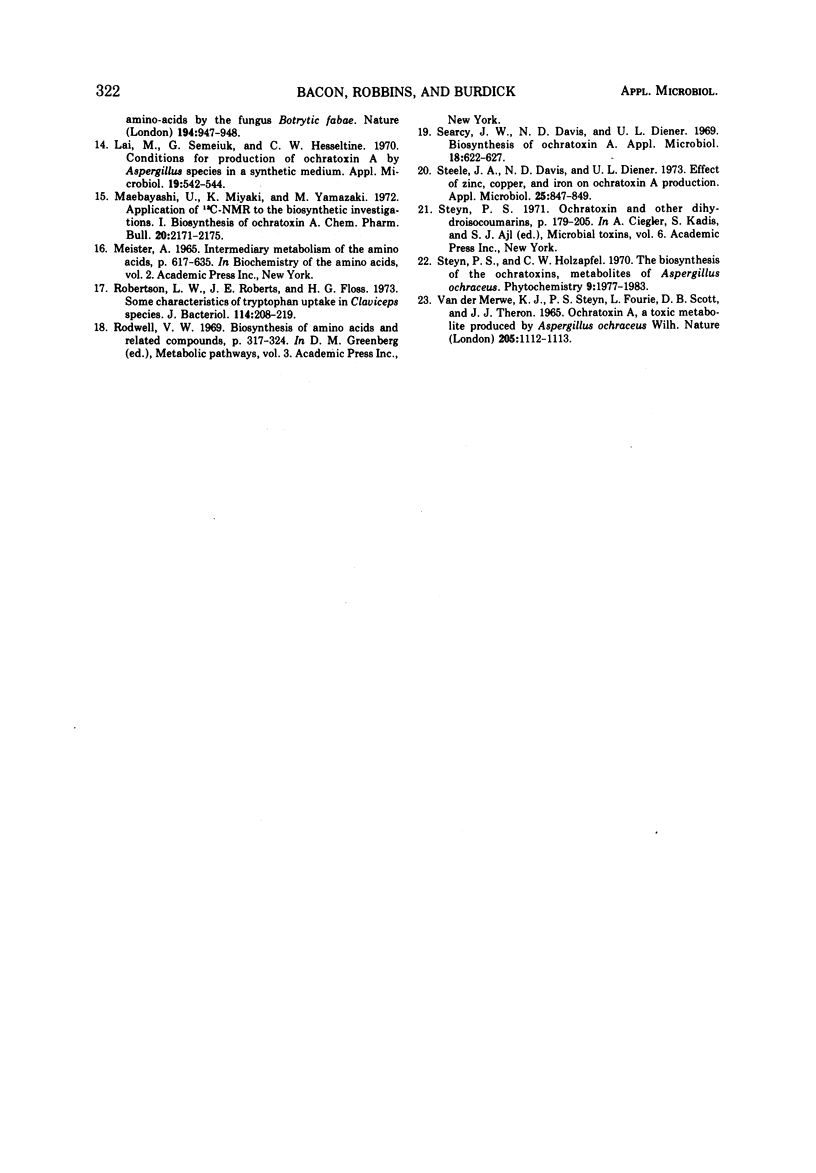
Selected References
These references are in PubMed. This may not be the complete list of references from this article.
- Bacon C. W., Sussman A. S. Effects of the self-inhibitor of Dictyostelium discoideum on spore metabolism. J Gen Microbiol. 1973 Jun;76(2):331–344. doi: 10.1099/00221287-76-2-331. [DOI] [PubMed] [Google Scholar]
- Bacon C. W., Sweeney J. G., Robbins J. D., Burdick D. Production of penicillic acid and ochratoxin A on poultry feed by Aspergillus ochraceus: temperature and moisture requirements. Appl Microbiol. 1973 Aug;26(2):155–160. doi: 10.1128/am.26.2.155-160.1973. [DOI] [PMC free article] [PubMed] [Google Scholar]
- Ciegler A. Bioproduction of ochratoxin A and penicillic acid by members of the Aspergillus ochraceus group. Can J Microbiol. 1972 May;18(5):631–636. doi: 10.1139/m72-100. [DOI] [PubMed] [Google Scholar]
- Ferreira N. P. The effect of amino acids on the production of ochratoxin A in chemically defined media. Antonie Van Leeuwenhoek. 1968;34(4):433–440. doi: 10.1007/BF02046465. [DOI] [PubMed] [Google Scholar]
- Gottlieb D., Molitoris H. P., Van Etten J. L. Changes in fungi with age. 3. Incorporation of amino acids into cells of Rhizoctonia solani and Sclerotium bataticola. Arch Mikrobiol. 1968;61(4):394–398. [PubMed] [Google Scholar]
- Lai M., Semeniuk G., Hesseltine C. W. Conditions for production of ochratoxin A by Aspergillus species in a synthetic medium. Appl Microbiol. 1970 Mar;19(3):542–544. doi: 10.1128/am.19.3.542-544.1970. [DOI] [PMC free article] [PubMed] [Google Scholar]
- Maebayashi Y., Miyaki K., Yamazaki M. Application of 13 C-NMR to the biosynthetic investigations. I. Biosynthesis of ochratoxin A. Chem Pharm Bull (Tokyo) 1972 Oct;20(10):2172–2175. doi: 10.1248/cpb.20.2172. [DOI] [PubMed] [Google Scholar]
- Robertson L. W., Robbers J. E., Floss H. G. Some characteristics of tryptophan uptake in Claviceps species. J Bacteriol. 1973 Apr;114(1):208–219. doi: 10.1128/jb.114.1.208-219.1973. [DOI] [PMC free article] [PubMed] [Google Scholar]
- Searcy J. W., Davis N. D., Diener U. L. Biosynthesis of ochratoxin A. Appl Microbiol. 1969 Oct;18(4):622–627. doi: 10.1128/am.18.4.622-627.1969. [DOI] [PMC free article] [PubMed] [Google Scholar]
- Steele J. A., Davis N. D., Diener U. L. Effect of zinc, copper, and iron on ochratoxin A production. Appl Microbiol. 1973 May;25(5):847–849. doi: 10.1128/am.25.5.847-849.1973. [DOI] [PMC free article] [PubMed] [Google Scholar]
- van der Merwe K. J., Steyn P. S., Fourie L., Scott D. B., Theron J. J. Ochratoxin A, a toxic metabolite produced by Aspergillus ochraceus Wilh. Nature. 1965 Mar 13;205(976):1112–1113. doi: 10.1038/2051112a0. [DOI] [PubMed] [Google Scholar]


